JUNE 2023 • Vol.10 • No.06 (ISSN 2564-2014) HOW TO LEVERAGE INTERNAL MOBILITY TO RETAIN EMPLOYEES - Paul Burani, Vice President of Enterprise, Tech Elevator 22 13 29 37 Why A Learning Culture Is Critical For Technology Companies - Christopher Roberts, Engaged Strategy Creative Reskilling Partnerships To Counter Tech Labor Shortage - Jeremy Shaki, Lighthouse Labs Setting Employees Up For Success In The New Workplace Era - Sarah Stewart-Browne and Stephanie Silver, North Strategic Internal Mobility: Fostering Employee Growth And Workforce Readiness - Sadhana Bhide, Pearson
How

Employee Learning & Development Excellence JUNE 2023 Vol.10 No.06
Mobility
Retain Employees
are successfully retaining staff through internal mobility initiatives
To Leverage Internal
To
Companies
07
INDEX (ISSN 2564-2014) Articles 17 How To Drive Employee Retention Through Meaningful Career Support Programs Learn how investment in three key professional development areas will go further than empty workplace perks in a tight labor market
- Paul Burani, Vice President of Enterprise, Tech Elevator
On the Cover
of
24 10 Actions To Take For Supporting Employee Development Implementing effective career development initiatives
- John Woods, Ph.D., Provost and Chief Academic Officer, University
Phoenix
32 Post-Covid Workforce eLearning Trends Reimagining learning in the post-Covid era
- Brett Farmiloe, Founder and CEO, Terkel
Exclusive Interview with Annick de Vanssay, Group CHRO, Sodexo 10 CHRO CORNER
- Carolyn Ryan, VP, Strategy and Business Development, Prosus
Internal Mobility: Fostering Employee Growth And Workforce Readiness
Internal mobility connects employee career pathing to workforce needs

- Sadhana Bhide, Strategic Workforce Planning Lead, Pearson
Why
A
Learning Culture Is Critical For Technology Companies
How a learning culture drives innovation and employee engagement
- Christopher Roberts, Managing Director, Engaged Strategy
Creative Reskilling Partnerships To Counter Tech Labor Shortage
With growing tech ecosystem, it is critical to implement reskilling programs for staff
- Jeremy Shaki, Co-Founder, Lighthouse Labs
Top Picks 13 22 29 37
Setting Employees Up For Success In The New Workplace Era
Empowering employees in the evolving workforce era

- Sarah Stewart-Browne, President and Stephanie Silver, Vice President, North Strategic

INDEX
Editorial Purpose
Our mission is to promote personal and professional development based on constructive values, sound ethics, and timeless principles.
Excellence Publications
Debbie McGrath CEO, HR.com - Publisher
Sue Kelley Director (Product, Marketing, and Research)
Babitha Balakrishnan and Deepa Damodaran Excellence Publications Managers and Editors
Deepak S Senior - Design and Layout
Employee Learning & Development Excellence Team
Deepa Damodaran Editor

Koushik Bharadhwaj Junior Editor
Nataraj Ramesh Design and Layout (Digital Magazine)
Vibha Kini Magazine (Online Version)
Submissions & Correspondence
Please send any correspondence, articles, letters to the editor, and requests to reprint, republish, or excerpt articles to ePubEditors@hr.com
For customer service, or information on products and services, call 1-877-472-6648
Debbie Mcgrath Publisher, HR.com
Editor, Employee Learning & Development Excellence
Unlocking Employees' Potential with Internal Mobility
Noorganization is immune to turnover. Whether losing new hires or saying goodbye to veteran team members, employee attrition is costly and causes inefficiencies across teams. While companies seek solutions to cure turnover, one existing solution is often overlooked - internal mobility.
Internal mobility is beneficial to both organizations and employees. For the company, it helps them retain valuable talent, reduce recruitment and onboarding costs, and foster a culture of continuous learning and development, which can lead to increased employee engagement and satisfaction.
For employees, internal mobility provides a pathway for career progression and professional growth, allows them to explore different roles, gain new skills and broaden their knowledge base, and also enhances job satisfaction and motivation.
It is thus becoming critical that companies facilitate internal mobility by encouraging employees to explore different career paths within the company and actively participate in their own development, and that of the company.
In How To Leverage Internal Mobility To Retain Employees, Paul Burani from Tech Elevator discusses why companies must invest in employees, rather than hire external candidates.
Read Sadhana Bhide's, from Pearson, Internal Mobility: Fostering Employee Growth And Workforce Readiness, to understand how internal mobility connects employee career pathing to workforce needs.
Check out Why A Learning Culture Is Critical For Technology Companies by Engaged Strategy's Christopher Roberts, and Creative Reskilling Partnerships To Counter Tech Labor Shortage by Lighthouse Labs' Jeremy Shaki.
Also, featured in this edition is an Exclusive Interview with Annick de Vanssay, Group CHRO, Sodexo, who shares her insights into nurturing talent, empowering people, and promoting DEI.
In all, this issue delves into the latest trends, best practices, and thought-provoking insights within the learning and development (L&D) landscape, exploring how these practices continue to evolve and shape organizations worldwide.
We hope that these articles provide answers to your questions about employee learning and development, and assist you in achieving excellence in your L&D initiatives.
Happy Reading!
Employee Learning & Development Excellence (ISSN 2564-2014)
is published monthly by HR.com Limited, 56 Malone Road, Jacksons Point, Ontario L0E 1L0 Internet Address: www.hr.com

Disclaimer: The views, information, or opinions expressed in the Excellence ePublications are solely those of the authors and do not necessarily represent those of HR.com and its employees. Under no circumstances shall HR.com or its partners or affiliates be responsible or liable for any indirect or incidental damages arising out of these opinions and content. EDITOR’S NOTE
Subscribe now for $99 / year And get this magazine delivered to your inbox every month Become a Member Today to get it FREE! SIGN UP OR For Advertising Opportunities, email: sales@hr.com Copyright © 2023 HR.com. No part of this publication may be reproduced or transmitted in any form without written permission from the publisher. Quotations must be credited.
Write to the Editor at ePubEditors@hr.com
Deepa Damodaran
How
are our
How are our Employee Learning & Development
Training & Development Products and Services helping to make you smarter?
Training & Development Excellence - Monthly Interactive Learning Journal

Employee Learning & Development Excellence - Monthly Interactive Learning Journal
This monthly interactive learning experience showcases effective, learner-centered technologies and content to facilitate the formal and informal transfer of the latest e-learning knowledge, information and skills in today’s workplace.
Training and Development Virtual Events
Employee Learning & Development - Virtual Events

Virtual events in the Training and Development track help you stay on top of the latest training, development and assessment techniques in order to maintain a competitive edge in the marketplace. Develop your skills, concepts, and attitude changes, and gain more knowledge to enhance performance. Training is crucial for organizational development and its success which is fruitful to both employers and employees of any organization. Some important benefits of training and development include: Increased productivity, Less supervision, Job satisfaction and Skills development. Each Virtual Event consists of up to 10 credit webcasts.
Virtual events in the Employee Learning and Development track help you stay on top of the latest training, development and assessment techniques in order to maintain a competitive edge in the marketplace. Develop your skills, concepts, and attitude changes, and gain more knowledge to enhance performance. Training is crucial for organizational development and its success which is fruitful to both employers and employees of any organization. Some important benefits of training and development include: Increased productivity, Less supervision, Job satisfaction and Skills development. Each Virtual Event consists of up to 10 credit webcasts.
Training and Development Webcasts for Credit
Employee Learning & Development - Webcasts for Credit
HR.com webcasts deliver the latest Training and Development industry news, research trends, best practices and case studies directly to your desktop. Webcasts are available live online with a downloadable podcast and a copy of the slides (PDF) available before and after each webcast. Earn all of the required recertification credits for aPHR, PHR, SPHR, GPHR, and SHRM Certifications. HR.com’s one-hour webcasts, in every HR specialty including HRIS and Payroll, are pre-approved for HRCI and SHRM credit (excluding Demo webcasts).
Training and Development Community
Employee Learning & Development - Community
Join almost 13,000 HR.com members with a similar interest and focus on Training and Development. Share content and download research reports, blogs, and articles, network, view educational webcasts, and “follow” peers and have them “follow” you in a social network platform to communicate regularly and stay on top of the latest updates. This well established Training and Development Community is an invaluable resource for any HR professional or manager.
Use these invaluable Training & Development resources today!
Employee Learning & Development
SEP 2017 Vol. 5 No. 09
For more information phone: 1.877.472.6648 | email: sales@hr.com | www.hr.com
In a world of unparalleled challenges (global pandemic, racial injustice, political rivalry, digital 4.0, emotional malaise), uncertainty reigns. Finding opportunity in this context requires harnessing uncertainty and harnessing starts with reliable, valid, timely, and useful information. The Excellence publications are a superb source of such information. The authors provide insights with impact that will guide thought and action.

Excellence publications are my ‘go-to’ resource for contemporary and actionable information to improve leadership, engagement, results, and retention. Each edition offers rich and diverse perspectives for improving the employee experience and the workplace in general.





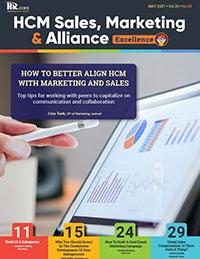

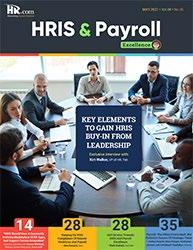

I regularly read and contribute to Leadership Excellence and Talent Management Excellence. I use many of the articles I read to augment my own presentations and I often share the articles with my clients. They are always quick, right on target for the latest issues in my field, and appreciated by my clients. If you want to stay up to date on the latest HR trends, choose a few of the different issues from the Excellence series of publications.


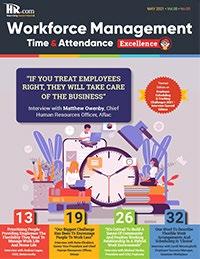


 Dave Ulrich
Rensis Likert Professor, Ross School of Business, University of Michigan Partner, The RBL Group
Julie Winkle Giulioni
Author, Virtual /Live Keynote Presenter, Inc.’s Top 100 Leadership Speakers
Dr. Beverly Kaye CEO, BevKaye&Co.
Dave Ulrich
Rensis Likert Professor, Ross School of Business, University of Michigan Partner, The RBL Group
Julie Winkle Giulioni
Author, Virtual /Live Keynote Presenter, Inc.’s Top 100 Leadership Speakers
Dr. Beverly Kaye CEO, BevKaye&Co.
WHY EXCELLENCE PUBLICATIONS?
We’re eager to hear your feedback on our magazines. Let us know your thoughts at ePubEditors@hr.com
How To Leverage Internal Mobility To Retain Employees
Companies are successfully retaining staff through internal mobility initiatives
By Paul Burani, Tech Elevator
Noorganization is immune to turnover. Whether losing new hires or saying goodbye to veteran team members, employee attrition is costly and causes inefficiencies across teams. While companies seek solutions to cure turnover, one existing solution is often overlooked - internal mobility.
Investing in internal mobility initiatives like reskilling can be a viable and more cost-effective solution when you combine the cost, time, and resources into recruiting and training new hires.
The “Great Resignation” has accelerated the rapid transformation of the modern workforce. While some argue it can be attributed to people simply no longer wanting to work, it’s more accurately defined by individuals simply reconceptualizing how they want their work life and careers to look.
Many employers have jumped to increased compensation and benefits, allowing greater flexibility and implementing novel perks to prevent attrition. However, internal mobility programs such as reskilling often need to be utilized more as a pathway to improving the employee experience overall.
Allow Your Employees to Grow with You
Organizations are searching for ways to retain employees amidst the rise of automation. A study by PWC shows that as much as 52 percent of jobs in certain industries are at risk of being displaced by the rising adoption of technologies, such as generative AI (artificial intelligence), machine learning and robotics. With this new automation comes a demand for new skills, and filling such roles through traditional hiring methods can be costly. According to SHRM, the average 42 days needed to fill a position costs over $4,000 per hire. When you’re working with software engineers, that number drastically increases up to $60,000 covering both lost output and replacement costs.
Submit Your Articles Employee Learning & Development Excellence presented by HR.com JUNE 2023 7 COVER ARTICLE
How To Leverage Internal Mobility To Retain Employees
Comparatively, reskilling costs $24,800 per individual, according to the World Economic Forum
Aside from cost savings, employees want to learn new skills, and they feel it’s their responsibility to do so. According to a Deloitte report, 54 percent of employees ranked opportunities for job advancement as a more important retention incentive than compensation and bonuses.
Reskilling provides a holistic solution by offering employees precisely what they’re looking for rapid learning, shared learning environments full of connection and camaraderie, and the chance to explore new passions.
Curate Skills with a Custom Curriculum
As digitization accelerates, your organization must keep pace with technological advancements. Whether you’re a retailer investing more in e-commerce, a financial organization seeking more secure online offerings, or a manufacturer optimizing shipping and receiving processes, there are new skills your team will need to stay competitive. In the past decade, a number of technology-related skills have become more desirable across retail, manufacturing and financial services (see below for comparison in total job posting volume aligned to these skills):
Rather than hire external candidates, invest in loyal team members with institutional knowledge. From there, you can develop your reskilling program to teach the in-demand skills your projects need.
Recommended Resource
Six Factors Influencing the Future of Tech Talent

[Whitepaper]
Paul Burani is Vice President of Enterprise at Tech Elevator. He is passionate about connecting talented individuals to rewarding opportunities in the modern workforce. After years of experience in marketing, sales and entrepreneurship, he found his calling in building talent pipelines for organizations seeking to future-proof their technology teams.
Would you like to comment?

Submit Your Articles Employee Learning & Development Excellence presented by HR.com JUNE 2023 8

ePublication EditorialCalendar2023 CheckoutthenewandupcomingthemedHR topicsinEmployeeLearning&Development Excellence. Check ePublications Editorial Calendar Here. Would you like to submit an article? | Write to us at ePubEditors@hr.com Submission Guidelines 1 Training and Measuring Productivity of Remote Employees Jan 2023 2 Learning Personalization Feb 2023 3 The Future of Upskilling and Employee Learning Mar 2023 4 Learner Engagement/ROIInterview Special Apr 2023 5 The State of Coaching and Mentoring May 2023 6 Internal Mobility Jun 2023
In an exclusive interview with HR.com, Annick de Vanssay, Group Chief Human Resources Officer of Sodexo, a French food services and facilities management company that employs 422,000 people and operates in 53 countries, touches upon nurturing talent, empowering people, and promoting DEI.

CHRO CORNER
Inspiring the Next Generation of HR Leaders
Where do HR leaders draw inspiration from? What are their worst nightmares? How did they stand the test of the changing times?
In this segment, we will trace your journey to the top.
This is your story - a story that is made of extraordinary accomplishments, methods that helped you overcome adversity, innovative programs that you led, and fundamental changes that you brought in. It's your chance to inspire the next generation of leaders.
Exclusive Interview with Annick de Vanssay, Group CHRO, Sodexo
Excerpts from the interview:
QWhat has your HR journey been like and what influenced you the most to have a positive impact on your career?
Annick: I come from four generations of women entrepreneurs! I am lucky to have these incredible female role models in my family. When I went to business school, I had in mind to start my own business. But I wanted to get hired by big companies first to learn.
Once I graduated, I started in finance. Auditing is very formative for an HR person; you learn about the company from top to bottom. But it was an HR internship at France Telecom that I did during my business studies that changed everything. And for the record, my mother created and ran a hotel restaurant. I tell myself that I did not fall into Sodexo by chance! I know restaurant and hospitality businesses and I have infinite respect for these professions, such as reception, catering, cleaning dishes, etc.
Submit Your Articles Employee Learning & Development Excellence presented by HR.com JUNE 2023 10
Copyright: @Dario Holtz
HR is very much in line with my values, it is a job that makes sense: taking care of employees and committing to offering them a fulfilling professional environment. HR has huge responsibilities: attracting new skills in jobs undergoing a profound transformation, preparing the adaptation of the workforce to the needs of the company and our customers, training to develop managerial practices, imagining the future of work... and above all, ensuring the safety, health, and well-being of all our employees in the workplace.
What were your challenges during the early days of your career? What are those today?
Annick: Since the beginning of my career, my concern is to be connected to all generations, to be able to prepare today and tomorrow's talent, and to give them the means to flourish while being business minded. As HR, having the right people at the right doing the right job is our ambition, with H&S as a top priority.
And today, I would say that the biggest challenge as HR director of a global services group in our sector is to retain our people and their talents. We need to work harder to ensure that they thrive within Sodexo.
How do you see workplace culture changing over the years?

Annick: It is no longer we who choose the talent, but the talent who chooses us. We need to become a more and more desirable employer, that's what our employer commitment is all about. Today, employees, whatever the generation want to work with conscience in a company.
At Sodexo we offer more than a job, it is a chance to contribute to something bigger. You belong to a family, to a team working under a common and shared purpose, “To create a better every day for everyone to build a better life for all”. This is our leverage, the way we do. As a responsible employer, Sodexo is committed to the well-being, health, safety, training, and development of its employees. Therefore, throughout the world, we have undertaken to define our employer commitment, the fundamentals of which are - belong, act and thrive!
Finally, the company plays the role of social mobility for its employees, in order to equip them with the necessary skills to generate an impact and positively influence their lives, our society and the environment.
Can you share the top three learnings from the challenges you faced?
Annick: HRD is a profession of humanism, whatever the difficulties one faces. The world is sometimes very violent and the HRD tries to temper it. Our responsibility is to be the guardian of this justice and integrity. This means learning your limits, i.e. when you can and cannot do things, and understanding that there is no compromise with yourself.
We represent the interests of the company, and therefore its continuity. This is a huge responsibility. But there are ways and means of exercising it: for me, what is important is respect and consideration. It requires a lot of discernment. It is a job that requires a lot of work on oneself, of centering oneself.
Where do you draw the line when it comes to work-life balance?
Annick: Being CHRO of 422,000 people all over the world is a huge responsibility and you must be committed to the well-being of your employees. My day-to-day job is to ensure a fulfilling and safe environment for all of them and constantly improve their quality of life.
CHRO Corner Q Q Q Q Submit Your Articles Employee Learning & Development Excellence presented by HR.com JUNE 2023 11
Like everyone, I sometimes need a break to rest and return better to do my job. First of all, spending time with my family is crucial for me. But I also have a passion which is gardening. I love plants and I grow many of them at home. Scabious, gentian ... I can recognize them, and I like to smell them. Another important occupation for me when I do not work is meditation. I read several books at the same time; they keep my brain awake and allow me to meditate.
What fundamental change(s) (in terms of culture) have you brought into your company?
Annick: Sodexo is a company of women and men who offer services that are people-oriented. It is a company with strong values that are committed to people to offer them the best possible experience within the company and provide them with opportunities to flourish.
When I joined Sodexo, I was amazed at our people's commitment. They dedicated themselves to offering the best services possible to our clients and consumers. It is true in India and Asia but also in all the 53 countries where we operate.
Since I arrived in 2022, my willingness in this company is to continue developing all these strong values, especially positioning Sodexo as an Employer of Choice. I relaunched the EVP promise to our employees early this year. We wish to attract and retain talent by empowering them to meet their full potential through a strong employer brand. We also built a diverse and inclusive culture where everyone can belong and thrive.
What are some major changes you see affecting HR
within the next few years?
Annick: A CHRO today has many responsibilities in a company, especially a big company like Sodexo, with jobs in profound transformation. The most important issue is to become and stay an attractive employer in the current “world war of talents”. As I already said, we no longer choose our future talents, it is the talents that choose us.
Name:
Designation:
Company:
Total number of employees: When did you join the current company?:
Total experience in HR:
Hobbies:
Annick de Vanssay Group Chief Human Resources Officer
Sodexo Group
422,000 employees (as of August 2022)
September 2021
25+ years
gardening, meditation, reading
It is why we relaunched our EVP Promise to be an employer of choice with strong values committed to people, committed to the climate and dedicated to the inclusion of all. It is the fundamentals of our employer brand: belong, act and thrive!
And I would like to emphasize on DEI. The importance of developing a comprehensive and consistent approach to DEI across the organization that has high resonance for all our people. The road to a more inclusive workplace is not easy or short. However, companies must take the first step to prioritize and acknowledge the importance of implementing DEI initiatives within their company culture to create a safer, and more inclusive and positive work environment. DEI is part of Sodexo’s DNA as it reflects the diversity of our clients and 100 million consumers in the world.
Would you like to comment?
CHRO Corner Q Q
Submit Your Articles Employee Learning & Development Excellence presented by HR.com JUNE 2023 12
Internal Mobility: Fostering Employee Growth And Workforce Readiness
Internal mobility connects employee career pathing to workforce needs
By Sadhana Bhide, Pearson
Therapid pace of technological change and shifting workforce demographics have elevated the importance of internal mobility for employees and employers. Amid continued economic uncertainty, U.S. job openings still outnumber available workers, leaving talent management professionals searching to fill gaps. Current employees are feeling the effects, too. After a decade of growth, employee engagement has fallen for the second year in a row
Investing in internal mobility strategies enables employers to retain top talent, improve business outcomes and adapt to changing market conditions. And turning those talent searches inward provides current employees with opportunities for
career growth, skills development and greater job satisfaction.
A robust internal mobility initiative puts people data into action to future-proof your workforce and advance business goals.
Effective Strategic Workforce Planning Enables Effective Internal Mobility
Too often, companies start from scratch when they need to grow rather than utilize their biggest asset: their people. One of the most significant benefits of internal mobility for employers is the potential for improved retention rates and reduced recruitment costs. According to Gartner, it costs an average-sized organization $49 million annually when its employees leave
due to a lack of future career opportunities.
Turnover decreases, however, when a company offers its employees opportunities for growth and development. Internal mobility also reduces recruitment costs by allowing employers to fill open positions with existing talent.
Developing a robust internal mobility strategy supports a foundation of readiness for strategic workforce planning. When an organization understands its people, leaders have better visibility into evolving workforce needs to make intentional resourcing decisions. And organizations can offer employees the agency to pursue their interests, develop their skills and grow within the company.
Top Pick Submit Your Articles Employee Learning & Development Excellence presented by HR.com JUNE 2023 13
Internal Mobility Fosters Employee Engagement
Nearly 75% of candidates told Gartner that growth opportunities are more important to them now compared to three years ago. Another recent study found that 3 out of 4 Millennial and Gen Z employees would willingly leave a role that did not offer skills development or career mobility opportunities.
Employees care about internal mobility because it enables them to:
● learn and grow within their current organization while advancing their career aspirations.
● expand their skills and knowledge.
● take on new challenges.
● gain exposure to different areas of the company.
These opportunities can increase job satisfaction, motivation and loyalty, as employees feel valued and supported in their career development. Deloitte found one organization experienced nearly a 30% increase in employee engagement after implementing an internal mobility program.
How Learning Fits into Internal Mobility Efforts
Pearson’s Skills Outlook: Employee View report explored workers’ perspective on the evolving labor landscape and where skills fit into employee career aspirations. Over 75% of U.S. workers see the world shifting toward a lifelong learning
model. And 81% see retraining and continuous learning as essential to keeping up in their careers. Employers are key to these learning efforts — the vast majority of employees want to pursue learning at work, and 92% expect their employer to either maintain or increase learning and development opportunities.
Why do employees want to learn? The top reasons shared with Pearson were increasing compensation and finding fulfilling work. Research supports workers’ thinking. McKinsey found that skills people acquire on the job — as opposed to outside learning opportunities — contribute to roughly half of the average person’s lifetime earnings.
Internal Mobility: Fostering Employee Growth And Workforce Readiness
Submit Your Articles Employee Learning & Development Excellence presented by HR.com JUNE 2023 14
Visibility into People Data Drives Stronger Internal Mobility Success
Managers caught up in the daily grind of overseeing projects and keeping up with their teams’ immediate needs can lose sight of their employees’ individual strengths, weaknesses, goals and needs. Bridging this gap requires better access to and understanding of an organization’s people data.
Without accurate, reliable data on employee skills, experiences and career goals, HR leaders struggle to identify internal mobility opportunities and create personalized career development plans — or help build the skills employees seek. Unfortunately, fewer than half (46%) of employers currently use data
to identify organizational skills gaps.
HR technology enables organizations to collect and analyze employee data, such as performance reviews, skill assessments and career aspirations. By leveraging people data, companies gain insights into employee skills gaps and can plan for strategic workforce development that elevates existing employees while filling organizational needs.

Internal mobility is more critical than ever in today’s rapidly evolving business environment. By promoting a culture of internal mobility, organizations future-proof their workforce to retain top talent, develop the skills and knowledge necessary
to meet future business needs and foster a culture of innovation and learning.
By incorporating talent management technology — and creating clear pathways for career progression — organizations empower their employees to access the opportunities and resources necessary to flourish and position themselves to meet future business demands and drive long-term success.
Sadhana Bhide is the Strategic Workforce Planning Lead at Pearson . Sadhana is an experienced HR specialist with a career of over 20 years in various roles including HR business partner, project manager and specialist function lead, mainly in banking (Barclays), and previously in wholesale distribution (Rexel Groupe) and broadcast media (ITN).
Would you like to comment?

Internal Mobility: Fostering Employee Growth And Workforce Readiness
Submit Your Articles Employee Learning & Development Excellence presented by HR.com JUNE 2023 15
Sponsor any of this year’s state of the industry research topics and come away with your very own affordable and branded research report and infographic, establish yourself as an industry thought leader by presenting at a one-day Virtual Event, and bolster sales through the generation of qualified leads.
See
The State of High-volume and Hourly Hiring

Virtual Event
Jun 20, 2023
Learn more at: hr.com/
HighVolumeRecruitingResearch

The State of Human Experience in the Workplace
Virtual Event
Aug 16, 2023
Learn more at: hr.com/
HumanExperienceResearch
The Future of Performance Management
Virtual Event
July 12-13, 2023
Learn more at: hr.com/PMResearch
The Future of Talent Acquisition
Virtual Event
Sept 6-7, 2023
Learn more at: hr.com/FutureTalentAcquisition
your
with this year’s State
and
expertise
Align
brand
of the Industry hot HR topics
showcase your
list of hot industry research topics below and give us a call to get started. A State of the Industry Research & Virtual Event Sponsorship Opportunity Contact us today to get started at sales@hr.com | 1.877.472.6648 | hr.com/industryresearch
How To Drive Employee Retention Through Meaningful Career Support Programs
By John Woods, Ph.D, University
Fromthe Great Resignation to Quiet Quitting, organizations continue to face challenges to employee engagement and retention. The central question of the past three years has been: what tactics will truly engage workers and inspire them to stay with their current organizations?
The latest data from the University of Phoenix Career Institute points to the roots of this issue; according to its 2023 Career Optimism Index, 66% of American workers believe there is a job out there that is a better fit for them than their current role. Critically, 40% do not see a clear path forward for advancing their career at their current job. Consequently, 53% are actively
looking for a new job or expect to in the next 6 months.
However, there is hope. 68% of these workers who are seeking new opportunities say they would consider staying at their current job if things could change. When nearly half of employers (46%) cite a lack of well-qualified applicants as the greatest challenge their organizations face when finding talent, there is a clear mutual benefit to investing internally, improving talent pipelines and fostering retention.
These investments must be significant to make a meaningful difference. Empty workplace perks like office happy hours and free lunches are no longer cutting
it. Instead, the Career Optimism Index reveals that foundational career development support is the key, particularly across the following three investment areas.
Increasing Access to Mentorship
American workplaces are facing a mentorship epidemic. According to the Career Optimism Index, most workers (56%) say they do not have a mentor, and 42% say they do not have someone who advocates for them in their professional life. A third say this lack of mentorship, advocacy, or support from a professional network has held them back in their careers.
Learn how investment in three key professional development areas will go further than empty workplace perks in a tight labor market
of Phoenix
Submit Your Articles Employee Learning & Development Excellence presented by HR.com JUNE 2023 17
With this in mind, employers must ensure their employees have a mentor and advocate within their workplace through formalized programming. Mentors and advocates play important roles in terms of guiding employees through career mapping processes, setting and tracking related goals, and communicating employee needs to higher leadership. They foster reliable 1:1 communication streams, ensuring workers regularly feel seen and heard. By facilitating such connections, leaders can help workers to plant roots within their organizations and identify paths for internal mobility, ultimately leading to greater employee satisfaction and loyalty, and in turn, higher rates of retention.
Embracing the Role of Employee Resource Groups

As with 1:1 mentorship programs, Employee Resource Groups (ERGs) have long been viewed as a valuable workplace tool for growing employees’ professional support networks. However, greater accessibility to these groups is still needed. While the Career Optimism Index finds that 69% of Americans are engaging with employee resource groups to some degree, half of these workers (49%) say they need support in their engagement and 48% say that engaging in resource groups is not even accessible to them in their career.
Organizations must integrate ERGs into company culture with intention. Regular, clear communication about what ERGs are available, who can be contacted to get involved, and what virtual and live programming is planned in upcoming weeks and months is an important first step. When employees identify ERGs they’d like to engage with, the organization should facilitate 1:1 connections within those groups. This way, employees can benefit from learnings and new relationships with those who have similar life experiences, both on a micro and macro level. In turn, employees will become further invested in their workplace community and long-term career trajectory within that organization.
How To Drive Employee Retention Through Meaningful Career Support Programs
Submit Your Articles Employee Learning & Development Excellence presented by HR.com JUNE 2023 18
How To Drive Employee Retention Through Meaningful Career Support Programs
Providing Opportunities for Continuous Skilling

Skilling has also proven to be a crucial element of employee engagement, as 70% of American workers say if their company gave them more opportunities to apply new skills, they would be more likely to stay throughout their career. This is an area where more direct coaching and support is required, as well; over a third of Americans (37%) say they do not have access to opportunities to develop skills they need to advance in their career. Furthermore, there is a disconnect between employees and employers on how new skills can lead to growth or reward for employees: 58% of workers say their employer or company makes this clear, in comparison to 84% of employers who believe they make it clear.

Investing in ongoing formal and informal skilling opportunities with clear systems for tracking progress and implementing skills acquired on the job is critical for retaining workers long-term. Employees should have the flexibility to pursue such learning and development opportunities through a multitude of avenues, in order to align with varied schedules and interests, whether that be through lunch-and-learns or formal coursework. Creating a multitude of career pathways within an organization through such skilling programs allows employees to envision a future within that organization that can evolve as they do.
The Bottom Line
Employees are prepared to make drastic moves if their needs are not being fulfilled in their current place of work; the Career Optimism Index indicates
that 30% of Americans would quit their jobs without having another one lined up and 46% would leave their company if offered a severance package of three months pay. Luckily, the solutions for mitigating this are clear. Employees today want to feel seen and understood. When the appropriate employer support is provided to meet these desires, improved engagement and retention will follow. By encouraging continuous career progression through formalized, fully integrated skilling and mentorship programs, leaders will create stronger, more knowledgeable, and adaptable workforces that are invested in their organization for the long haul.
to comment?
Would you like
John Woods, Ph.D. is Provost and Chief Academic Officer at University of Phoenix
Submit Your Articles Employee Learning & Development Excellence presented by HR.com JUNE 2023 19
HRCI® & SHRM® CERTIFICATION PREP COURSES
GROUP RATES AVAILABLE
For HR Professionals
Show that management values the importance of the HR function, and has a commitment to development and improvement of HR staff.
Ensure that each person in your HR department has a standard and consistent understanding of policies, procedures, and regulations.
Place your HR team in a certification program as a rewarding team building achievement.
For Your Organization
Certified HR professionals help companies avoid risk by understanding compliance, laws, and regulations to properly manage your workforce.
HR Professionals lead employee engagement and development programs saving the company money through lower turnover and greater productivity and engagement.
A skilled HR professional can track important KPIs for the organization to make a major impact on strategic decisions and objectives, including: succession planning, staffing, and forecasting.
HR.com/prepcourse CALL TODAY TO FIND OUT MORE 1.877.472.6648 ext. 3 | sales@hr.com
1 Less expensive than a masters or PhD program, and very manageable to prepare with
2. legislation and best practices
3. Recognized, Industry benchmark, held by 500,000+ HR Professionals
Group Rate Options
We offer group rates for teams of 5+ or more for our regularly scheduled PHR/SPHR/ SHRM or aPHR courses.
For groups of 12+, we can design a more customized experience that meets your overall length of the course.
Groups rates for HRCI exams are also available as an add-on.
All group purchases come with 1 year of HR Prime membership for each attendee to gain the tools and updates needed to stay informed and compliant

CALL TODAY TO FIND OUT MORE 1.877.472.6648 ext. 3 | sales@hr.com | HR.com/prepcourse
1 2 3
Why A Learning Culture Is Critical For Technology Companies
How a learning culture drives innovation and employee engagement
 By Christopher Roberts, Engaged Strategy
By Christopher Roberts, Engaged Strategy
An organization is defined by the individuals who work within it toward achieving common goals. For the organization to grow and achieve its objectives, each individual within the organization must grow and develop as well. Hence,
every organization that intends to grow must ensure that every individual working within it also grows.
I should explain what I mean by growth. It is not attending training sessions or getting a diploma
or a degree. In other words, it is not about acquiring knowledge. It is about the application of knowledge so that you grow to become a better version of yourself; a more effective human being.
Submit Your Articles Employee
& Development Excellence presented by HR.com JUNE 2023 22
Learning
Top Pick
When I conduct leadership workshops or one-on-one executive coaching, one of the toolkits that I use is the understanding and application of the six core human needs that all individuals have regardless of gender, age, creed or culture. One of the self-actualizing core needs is personal growth.

In fact, when we conduct strategic employee engagement surveys, one of the key drivers of engagement is how well the organization meets the individuals’ need for personal growth. Hence, when an organization delivers against this specific need, it increases employee engagement and improves staff loyalty. Let me explain this whole dynamic in a little more detail.
Building a learning culture has become critical for technology companies for several reasons, especially since they operate in an excessively dynamic environment. With technology evolving at an unprecedented pace, technology companies need to keep up with the latest developments to stay competitive. A learning culture among their employees allows them to quickly adopt new technologies and processes, adapt to changing customer needs and stay ahead of the competition.
This need for fast-paced growth not only makes the technology industry highly competitive but also enhances the demand for
top talent. Companies that invest in employee development and provide opportunities for growth and learning are more likely to attract and retain such top talent.
problem-solving, and decisionmaking skills.
Such an engaged workforce is massively productive and can drive better business results by delivering better customer satisfaction. In fact, according to our research, we found that engaged employees are 2X more loyal than disengaged employees. They not only go above and beyond to deliver great work results, but also become brand ambassadors of the company internally and externally.
Hence, just by investing in employee development, technology companies can build stronger relationships with their customers and drive business growth.
Now remember that to grow and adapt to such a dynamic environment, an organization needs to be focused on innovation. A learning culture encourages innovation by giving employees the tools and resources they need to experiment, take risks, and try new ideas. This fosters a culture of creativity and continuous improvement, which can lead to breakthrough ideas and solutions.
Such a culture of innovation and learning also has a massive impact on employee engagement, which emphasizes heavily on collaboration and teamwork. This means that employees across the spectrum of the organization are empowered with communication,
Would you like to comment?
Why A Learning Culture Is Critical For Technology Companies
Christopher Roberts is the Managing Director at Engaged Strategy and creator of the Total Engagement Model®.
Submit Your Articles Employee Learning & Development Excellence presented by HR.com JUNE 2023 23
Building a learning culture has become critical for technology companies for several reasons, especially since they operate in an excessively dynamic environment.
10 Actions To Take For Supporting Employee Development
Implementing effective career development initiatives
By Brett Farmiloe, Terkel
Tohelp you implement effective career development initiatives in your organization, we've gathered insights from ten HR leaders, coaches, and experts. From setting objectives and networking to structured personalized L&D programs, discover the top ten strategies that have proven successful in their businesses and why you should implement them in yours.
● Set Objectives, Network, and Learn
● Foster Growth in Learning Circles
● Career Buddies Program Connects Employees
● Mentorship Programs Benefit All
● Utilize Google's GROW Model
● Discover Your Zone of Genius
● Develop a Keen Sense of Judgment
● Prioritize Work for Leadership Growth
● Upskilling Stipend with Knowledge Sharing
● Structured Personalized L&D Program
Set Objectives, Network, and Learn
Create a list of both long-term and immediate work objectives. You'll have a better idea of what you need to work on in terms of knowledge, experience, and actions if you have a plan to get you there.
Establish solid professional relationships with peers, mentors, and thought leaders in your field, as this can open doors and provide invaluable insight and guidance. To further your career and business, join relevant professional groups and take part in networking events.
Continuing one's education in one's chosen field is an important part of maintaining a competitive edge. This is of paramount significance in sectors experiencing rapid change, such as technology-related and dependent sectors.
Aleksandar Ginovski, Career Expert, Resume Expert, and Product Manager, Enhancv

Submit Your Articles Employee Learning & Development Excellence presented by HR.com JUNE 2023 24
Foster Growth in Learning Circles
We have found that establishing learning circles has been a highly effective career development strategy for our employees. Learning circles are small peer-led groups that meet regularly to discuss a particular topic or skill and offer support and feedback to each other. This initiative has proven successful in our business for several reasons:
- Encourages continuous learning and development in a social and supportive environment
- Fosters collaboration and team-building skills
- Facilitates knowledge-sharing, problem-solving, and cross-functional learning
- Promotes accountability and motivation to achieve individual and team goals
We believe that learning circles can benefit any organization looking to promote career development and foster a culture of continuous improvement. It allows employees to become proactive in upskilling themselves for the better and unleashes new potential they weren't even aware of.
Mentorship Programs Benefit All
One career development initiative that has proven successful in my business is our mentorship program. We pair up experienced employees with newer team members, allowing them to learn from someone who has already navigated the challenges of our industry.
I've found that this program not only helps our newer employees grow and develop their skills but also benefits our experienced team members by giving them an opportunity to pass on their knowledge and gain a new perspective.
I believe a mentorship program is a valuable career development strategy that can benefit any business. It creates a culture of continuous learning and growth and helps to build a strong, supportive team.
Tracey Beveridge, HR Director, Personnel Checks
Jefferson McCall, Co-founder and HR Head, TechBullish

Utilize Google's GROW Model
I've found Google's GROW Model to be effective because it touches on actionable components: G (goal - what do you want?), R (reality - what's happening now?), O (options - what could you do?), W (will - what will you do?).
This framework really establishes how managers should speak with direct reports about career development and is a proven strategy that works because of the actionable questions, which elicit conversations during a 1:1.
Discover Your Zone of Genius
A fantastic book employees can read is The Big Leap by Gay Hendricks. Readers are walked through determining their zone of genius, among other “zones.” Most people aren't working within their zone of genius—the gift they offer and enjoy using that others don't have—which means their energy, productivity, and happiness is often zapped.
Encourage your employees to read the book and find out what their zone of genius is, and then help them come up with ways to use it more. It will benefit them and the organization tremendously.
Megan Dias, Career Services Coach, Parsity
 Kelli Anderson, Career Coach, Resume Seed
Kelli Anderson, Career Coach, Resume Seed


10 Actions To Take For Supporting Employee Development
Submit Your Articles Employee Learning & Development Excellence presented by HR.com JUNE 2023 25
Develop a Keen Sense of Judgment
There are many things that can be taught and many that cannot be taught through training and education. Processes, subject area knowledge, and technical skills belong to the former, while charisma and curiosity belong to the latter. Somewhere between these two is judgment.
Judgment can be shaped and guided, but not taught. It comes through the mentored experience of success and failure. At my professional services firm, recruits are brought on and mentored with the express purpose of developing their judgment.
Growth and retention are mostly driven by the wealth and stature of the partner track. But perhaps just as important is the potential to establish a keen sense of justice.
In a service business with new and recurring challenges solved only by innovative minds, superb judgment sets the strongest apart and ensures the firm's success. Fewer candidates may strive for such a goal, but those that become tomorrow's leaders.
Prioritize Work for Leadership Growth
Learning how to prioritize work effectively for yourself and your team can help position you as a leader and ensure higher employee morale. One of the biggest complaints in employee satisfaction surveys is often "lack of prioritization."
As a leader, breaking out of that cycle where everything is important (therefore nothing is important) can help your team focus and start to move the needle toward impactful work.
Start with determining what the most important company goals are. Growing revenue, retaining customers, engaging employees, etc., are all important goals—but what is the MOST important?
If growing revenue is the most important to the business this quarter, then the bulk of your time should be spent on work that is directly affecting that goal. That's where prioritization comes in; you can still work on other efforts, but the allocation needs to go towards that first. Helping your team focus and feel impactful will position you as a strategic and valuable leader.
Tony Topoleski, Project Manager, ECA Partners
 Jennifer Frigault, Executive Coach, Spire Vision Leadership
Jennifer Frigault, Executive Coach, Spire Vision Leadership

10 Actions To Take For Supporting Employee Development
Submit Your Articles Employee Learning & Development Excellence presented by HR.com JUNE 2023 26
Upskilling Stipend with Knowledge Sharing
We provide all full-time employees a quarterly stipend to put towards upskilling. Employees can choose to learn more about a current skill they have or choose to learn something completely new but still related to company goals.
We have noticed a tremendous interest in this program and request our members to share their new knowledge with others in a knowledgesharing session, which can be live or recorded so others can learn too!
Career Buddies Program Connects Employees
One of the best career development initiatives we've ever run started off as nothing more than an experiment. Ever since the pandemic began, we noticed a concerning metric in our monthly feedback polls. Employees were feeling more isolated working from home.
To remedy this, we created a program called "career buddies."
Jarir Mallah, HR Specialist, Ling App
Structured Personalized L&D Program
One highly successful career development initiative I've witnessed is evaluating training gaps and implementing a structured and personalized Learning and Development (L&D) program categorized into technical, behavioral, and professional domains.
This initiative ensured that employees across all levels and roles received targeted training to enhance their abilities within a specified timeframe. The program included mentoring and coaching sessions for individuals identified for succession planning.
Implementing this strategy has provided employees with tailored learning opportunities, empowered their career choices, and fostered a culture of continuous growth, leading to higher engagement, productivity, and retention.
I highly recommend others try this strategy to create a workforce that is motivated, fulfilled, and aligned with organizational objectives.
When an employee joined the program, they would be paired with a career buddy in a similar role somewhere in the company. They would meet once a quarter and chat about what's going on in their work and their progression at the company.
What started out to make people feel connected soon grew into an amazing career development program. We saw more and more employees sharing their career aspirations with one another and encouraging each other to take on more ambitious projects.
I highly recommend creating some type of social structure around career development, as it really is a case of "a rising tide lifts all boats."
Bogdan Zlatkov, Lead Instructor for HR and Hiring, Growth Hack Your Career

Brett Farmiloe is the Founder and CEO – and currently CHRO - of Terkel.io Brett is an SHRM Influencer and has also been a keynote speaker at several state SHRM conferences around the topic of employee engagement."

 Divvya Desai, HR, Naman HR
Divvya Desai, HR, Naman HR
Would you like to comment?

10 Actions To Take For Supporting Employee Development
Submit Your Articles Employee Learning & Development Excellence presented by HR.com JUNE 2023 27
Best-in-Class Education For All Your Learning And Training Needs
HR.com prepares HR leaders to be strategic business leaders by curating and delivering best-in-class products and services so you don’t have to waste time seeking out content on your own. We leverage technology and experience to provide you with customized solutions to best meet your professional development needs at every stage of your career.
From on-demand to cohort-based offerings, below is a listing of virtual courses that will challenge and empower you by giving you the tools to drive innovation and success in your organization.
Leading Agile e-Learning Development Certificate Course
Transform your e-Learning programs through an Agile approach Prepare for a mindset-shift, the practice, and the tools to transition your team to iterative ways of working that will improve the performance impact of your e-Learning designs using Successive Approximation Model (SAM).
Effective Learning Strategies Certificate Course
Use the power of learning science and cognitive behavior, ground your practice in evidence-based approaches, avoiding myths and hype. Create uniquely valuable learning experiences by exploring cognitive science and implications for organizational learning.
L&D's Playbook for the Digital Age
Learn to formulate a short- and long-term learning strategy based on evolving business needs in the digital age. Based on award-winning learning designer Brandon Carson's forthcoming book "L&D's Playbook for the Digital Age, this workshop focuses on providing a development program targeted to both current learning leaders and those aspiring to take on the role of leading a corporate learning organization. The workshop also provides an opportunity for participants to grow their professional network by connecting to like-minded learning professionals to learn and share as well as advance personal growth.
Webcast Like a Boss
Tips, tricks, strategies, and best practices improve your Webcast presentation skills. Our team of experts has gathered the most valuable and effective practices and methods to ensure you will be able to garner audience attention, tell your story, and give killer virtual presentations!
Lean Six Sigma Basics
The Lean Six Sigma Basics course teaches strategies, techniques, and concepts practitioners will need to complete process improvement projects.
Introduction to Agile E-Learning Development
This virtual self-paced course explores the methodologies and practices of Agile development and explains the key principles that form the foundation of Agile Project Management.
The Technology of Online Learning
Learn Best Practices Using Technology for Creating Online Learning. This course covers the key software and hardware options available, and it covers best practices in using technology.
Introduction to Online Learning
Learn Basic Techniques to Create and Deliver Online Learning. This course introduces the major models, tools, and techniques for creating and delivering online learning.
Gain access to more expert-led courses.
At HR.com, we are committed to educating and inspiring HR professionals and helping them build meaningful and impactful careers. With products and resources rooted in education, research, and leveraging cutting-edge technology, we help at every career stage - and over 1.92 million HR pros agree! (How could that many people be wrong?) By delivering best-in-class learning products, 250+ annual webcasts and 30+ world-class events, and innovative and thought-provoking research through the HR Research Institute, HR.com strives to inspire and strengthen workforces to change the world. HR.com also offers the most comprehensive HR certification exam preparation and guarantees a passing score on all SHRM and HRCI certification exams. Technology and experience drive our customized solutions that will help you become the best and most successful version of yourself.
Employee Learning & Development Excellence presented by HR.com JUNE 2023 28
Creative Reskilling Partnerships To Counter Tech Labor Shortage
With growing tech ecosystem, it is critical to implement reskilling programs for staff
By Jeremy Shaki, Lighthouse Labs
Every company — no matter the industry — is underpinned by technology. Over the last decade, the information and communications technology (ICT) sector has seen massive growth, increasing the demand for a skilled tech workforce. For companies to maintain their market share or grow their business, your workforce must have the skills required to operate, maintain and improve the technological platforms that underpin your business.
There is no longer a wait-and-see approach when it comes to reskilling people into tech. Worldwide IT spending is projected to total $4.5 trillion in 2023, an increase of 2.4% from 2022, according to the latest forecast by Gartner, Inc. Over the next two decades, 42% of the current workforce will be impacted by automation and
technology. Manufacturing jobs are a prime example with automation taking over 1.7 million jobs.
While artificial intelligence (AI) is about to upend entire industries and make jobs and skills redundant, what people do not consider is the number of new jobs AI is creating. We are on the cusp of AI’s potential with the release of ChatGPT and a windfall of competitors coming onto the scene. The speed at which we will see rapid change and the possibilities of AI will accelerate faster than any technology we have seen in our lifetime. And those possibilities mean new jobs that will require tech workers. In fact, the rise of AI is fueling demand for specific skill sets, such as data science and data analytics.
According to the World Economic Forum’s Future of Jobs Report,
97 million new jobs requiring tech skills will need to be filled by 2025. We are starting to see this now with the labor shortage across the country.
When we look at the breakdown of the workforce holistically, the ugly truth is there is still an alarming lack of diversity in the tech industry. With 97 million new jobs expected, there is an opportunity to tap into a diverse talent pool, solving the talent shortage and breaking down the barriers for individuals, who have faced significant systemic inequality or other obstacles to full and equal participation in the labor market.
The solution to the labor shortage is within America’s borders, but as recruiters, we need to focus on the candidates right in front of us — our internal teams — and provide fair and equitable opportunities to all.
Submit Your Articles Employee Learning & Development Excellence presented by HR.com JUNE 2023 29 Top Pick
From One Career to the Next
According to a Gallup study commissioned by Amazon, 57% of workers are looking for opportunities to upskill and reskill at their current place of employment. That fact should light a fire under any leader and make them move quickly.
Employees recognize the shifting market and are willing to learn new skills to stay at their workplace. As employers, rather than firing staff and rehiring new employees with different skill sets, it is significantly more cost-effective to invest in corporate reskilling opportunities and retain members of their current talent pool. By training the existing talent to learn new skills, organizations can retain talent, hold onto important historical knowledge of the company, create new opportunities to build employment engagements and address the shifting needs of the business.
Let us take a look at someone in administration. AI and automation have already made major parts of day-to-day tasks quicker and, to be blunt, more obsolete. That said, administrators know how the organization operates and regularly work with inputs and data. These types of workers are an asset to the company. By demonstrating the career growth opportunities and the support they would receive, organizations can level up their workforces and avoid onboarding new talent.
When an employer chooses to invest in their staff, they can retain employees with institutional knowledge of the business that already fit within the company culture. When we say reskilling options, it is no longer just learning to code or build a website. It is a variety of new skills and programs like learning management software (LMS), learning experience platforms (LXP), and bootcamps that are providing real opportunities to take advantage of this accelerating way of business.
Corporate Reskilling Is Needed to Future-proof the Organization
Recently, there has been a wave of high-profile cyber attacks on companies, including Dole Food Company, stressing the need for cybersecurity in all industries. These cyber-attacks have caused $457 million in lost income and have been devastating to the bottom line of companies on the receiving end of these attacks. To avoid significant repercussions, immediate investment and training in these areas will only provide further protection.
Training Programs Need to Be Creative to Match the Tech Industry’s Growth
The speed of change in tech also needs to be addressed. A good reskilling program is creative and best suited to the company. As professionals, we need to forecast changes in our industry and be proactive in our approach.
To begin, professionals have to take inventory of where the organization currently stands and identify areas of opportunity. For example, at Lighthouse Labs, we recognized the need for more diversity in the tech industry. Working with community organizations and post-secondary institutions across Canada, we developed the ‘ICT Boost’ program through which we are targeting equitydeserving students and providing skills training so they have equal access to entry into the tech industry. Not only is this solution addressing the need for more talent, but it is providing the needed infrastructure to make more equitable training opportunities. It will also fortify tech with more diverse insights –which is crucial as AI continues to intensify industry-wide.
Businesses must identify these barriers and develop creative solutions to allow equal access to their industries. Reskilling partnerships are an effective way to work with another organization and target a larger, diverse talent pool.
Benefits of Reskilling for the Employee
Investing in reskilling shows the company cares about its employees, and it motivates them to take on new challenges in their current roles. Upskilled and reskilled employees stay longer at their companies than external hires. It also allows employees to try something new and develop interests in areas they normally would not get exposure to.
Creative Reskilling Partnerships To Counter Tech Labor Shortage
Submit Your Articles Employee Learning & Development Excellence presented by HR.com JUNE 2023 30
Reskilling can result in higher job wages and accelerate career growth for employees. At Lighthouse Labs, our female graduates earn 25% higher salaries after graduating from the program than they would have earned on their original career trajectory with market-rate raises. That means they earned $170k more in salary in their first five years than if they had stayed on their original career path.
Benefits of Reskilling for the Organization
When employees are satisfied and motivated to grow within the organization, it has many benefits for the business. Taking a creative approach to solving the demand for skilled workers demonstrates that the company is innovative and cares about its employees. This results in attracting top talent and being
a leader in the market. The company’s reputation grows, and competitors take notice.
Employees are also more likely to stay with the company when they are valued, decreasing the costs of high turnover and training. When hiring someone new to the company, they have to be taught how to use software, company protocols and policies, whereas current staff already know this, so reskilling can save costs here.

As employees expand their skill set, they can add more value to the company by participating in business conversations and learning more about how the business operates on a greater scale. Knowing different roles allows employees to problem-solve and think strategically about holistic solutions.
Creative Solutions Are the Solution to the Labor Shortage
With automation reinventing the workplace, there is a unique opportunity for Americans to tap into different sectors, earn more money and have greater job satisfaction. Employees need to adapt to their business’ needs by learning new skills, allowing them to fill the growing demand for job openings in booming industries like tech.
As employers, we play a major role by providing these opportunities for our existing staff and enabling them to grow professionally. To reduce the labor shortage, business leaders must think creatively to reskill their workforce and provide equitable opportunities for all.
The workplace has evolved, and we must evolve with it. Automation and AI are here to stay, so companies must adapt and look out for their employees to ensure they are set up for success within the business while addressing the business’ needs.

Creative Reskilling Partnerships To Counter Tech Labor Shortage
Would you like to comment?
Jeremy Shaki is the Co-Founder of Lighthouse Labs.
Submit Your Articles Employee Learning & Development Excellence presented by HR.com JUNE 2023 31
Post-Covid Workforce eLearning Trends
Reimagining learning in the post-Covid era
By Carolyn Ryan, Prosus
Beyondits broad impact on the health of the global population, Covid-19 has caused a number of other significant effects across economies worldwide. From a global technology boom to supply chain shortages to persistently high inflation, the impacts of COVID can be seen almost everywhere.
One of the most significant consequences has been the changes Covid has caused within corporations, in particular the acceleration of home and hybrid working. The results of this shift can be seen in the substantial growth of e-learning since the start of the pandemic, so we decided to undertake a survey of learning and development (L&D) professionals around the world to see how Covid has changed the learning landscape and what is driving future decisions.
Key Findings
1. Move to e-learning continues.
● While e-Learning has grown significantly in recent years, the Covid pandemic has served to accelerate the process. Pure e-learning now accounts for more than half of overall L&D spending, with the number reaching nearly three-quarters of total spending if you include hybrid training that includes some e-learning as a part of it.
● Alongside hybrid training, pure e-learning can be split between self-paced e-learning, such as massive open online courses (MOOCs), which accounts for 31% of total learning spend, and
instructor-led e-learning, where small cohorts are trained at the same time in an online environment, which accounts for 21%.
● Our survey suggests that this trend is set to continue, with spending on e-learning expected to outstrip overall spending increases during 2023.
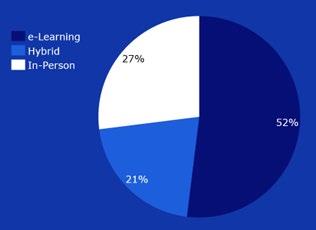
2. Satisfaction levels have room to improve.
● The headline numbers around satisfaction actually look encouraging for content providers, with those expressing some level of satisfaction (somewhat or fully satisfied – 58%) nearly 6x those expressing negative views (somewhat or totally unsatisfied - 10%). However, when those who are neutral are added in, fully 42% of L&D professionals do not have a positive view of their e-learning content providers, with smaller companies having the least positive view of the available services.
Submit Your Articles Employee Learning & Development Excellence presented by HR.com JUNE 2023 32
● Once again, we can see the impact of Covid on these numbers. The shift towards e-learning has many positives, but one of the challenges, particularly with regard to MOOCs is that they are entirely self-paced and provide little engagement or accountability – and as a result, have consistently low completion rates.
● The prevalence of trainee and manager feedback alongside course completion rates as the top three measures of success suggest that improving the tangible impact of courses and taking steps to ensure increased engagement with content (and so improving completion rates) are going to be key to improving satisfaction numbers.


Post-Covid Workforce eLearning Trends
Submit Your Articles Employee Learning & Development Excellence presented by HR.com JUNE 2023 33
3. Priorities are changing due to the pandemic.
● You do not have to look too deeply into the priority areas for learning and development to see the impact of Covid. With all areas of employee management impacted by the shift to remote and hybrid working, it is unsurprising that the current top three focus areas for L&D are all areas where those stresses are being felt most acutely – onboarding, leadership development, and manager development.

● With significant portions of workforces now all or somewhat remote, the challenges of how to engage, guide and measure employees have increased significantly since the start of the pandemic, so the inclusion of executive and manager development in the top three is to be expected.
● Similarly, the challenges of how to bring on new staff, how to integrate them into dispersed teams, and how to build a high-performance team culture that overcomes distance means that onboarding new staff is a natural fit for the other spot in the top three.
4. Shifting business needs driving new areas of training focus.

● Our survey showed that the number one factor driving decisions around new purchases of training content is ‘new training needs’. Once again, the impact of Covid on businesses can be seen in the new needs that our survey identified:
● It is not just managers who need help dealing with the challenges caused by significantly increased remote working. All employees are having to navigate how to communicate more effectively across teams and with customers and new colleagues. To help the situation, L&D leaders pointed to an increased focus on soft skill training moving forwards.
Post-Covid Workforce eLearning Trends
Submit Your Articles Employee Learning & Development Excellence presented by HR.com JUNE 2023 34
● Similarly, Covid provided a turbo-boost to the digitization efforts of businesses across sectors and company sizes. As a result, it makes sense that digital transformation, data and analytics, and technology overall would place high in the rankings of priority content for training.

● Finally, businesses are dealing with accelerated shifts in society caused by Covid, plus the shift toward more diverse, younger workforces driven at least in part by the loss of older employees through illness or retirement because of the pandemic. The impact of these shifts has been increased focus on diversity, equity & inclusion (DE&I) as well as on sustainability in training content.
Looking at the survey, overall it is clear that Covid has had a significant impact on how training is delivered
as well as on the content being consumed. That said, there is also a strong sense that rather than fundamentally changing the L&D environment, Covid has instead simply accelerated trends and directions that were already there. As a result, it feels like the changes that have been wrought are unlikely to fall away as the pandemic recedes. Instead, the trends identified in the survey are likely to become the ‘new normal’ for L&D – with implications for content developers, learning platform providers and L&D teams alike.
Carolyn Ryan is VP of Strategy and Business Development at Prosus
Would you like to comment?

Post-Covid Workforce eLearning Trends
Submit Your Articles Employee Learning & Development Excellence presented by HR.com JUNE 2023 35
VIRTUAL EVENTS & HR.COM WEBCASTS UPCOMING www.hr.com/upcoming_webcasts www.hr.com/virtualconferences View our Upcoming Webcasts Schedule and Register Today! View our Upcoming Virtual Conference Schedule and Register Today! Transform Hiring with the Greatest Overlooked Tool June 20, 2023 12:00 PM - 1:00 PM ET REGISTER Tackling Threats to Employee Financial Well-being: How and Why it’s Critical to your Business Success June 8, 2023 12:00 PM - 1:00 PM ET REGISTER Engaging Frontline Workers through Operational Communications to Drive Organizational EX Maturity June 28, 2023 12:00 PM - 1:00 PM ET REGISTER Navigating Future of Learning: Innovations in Customer Education & Employee Development for Growth June 21, 2023 12:00 PM - 1:00 PM ET REGISTER WEBCASTS The Future of Learning Technologies June 21, 2023 Compliance Can Be an Advantage June 22, 2023 1:00 PM - 2:00 PM ET WEBCASTS VIRTUAL EVENTS The Future of Employee Well-being June 7-8, 2023 REGISTER The State of High-volume and Hourly Hiring June 20, 2023 REGISTER REGISTER REGISTER
Setting Employees Up For Success In The New Workplace Era
Empowering employees in the evolving workforce era
 By Sarah Stewart-Browne and Stephanie Silver, ServiceNow
By Sarah Stewart-Browne and Stephanie Silver, ServiceNow
TheCanadian workforce has undergone a significant shift in the last year, with many organizations transitioning to new models of flexible working. This new way of working can be a challenge for employees, especially when it comes to feeling engaged and building their professional experience and personal brand. This reality, combined with gaps in in-person training as a result of the pandemic make it more important than ever for employers to be focused on professional development opportunities and training for employees.
Benefits for Employees and Employers
Investing in professional development opportunities can lead to a wide range of benefits for both employees and employers. For employees, it can improve their confidence, engagement, and performance. By providing opportunities for employees to learn and grow, employers demonstrate a commitment to their employees’ professional development, which can lead to increased loyalty, job satisfaction and retention.
Submit Your Articles Employee Learning & Development Excellence presented by HR.com JUNE 2023 37 Top Pick
When we look at it through the lens of a company’s brand reputation and protection, investing in employees pays dividends. Leadership training is often prioritized when it comes to learning and development budgets to make sure employees, who are heading into leadership positions, are ready when the time comes. It is equally important to think about training those who are already in leadership. They are the faces of your business. Media training and presentation not only bolsters confidence, but it also helps spokespeople deliver brand messages in a clear and compelling way.
Crisis and risk management training will help you mitigate risk, and it prepares your team for the worst-case scenario – something many companies faced head-on in the last few turbulent years. Organizations that fared better than others are the ones that were prepared.
Strategies for Employers


When it comes to investing in professional development for employees, there is no one-sizefits-all approach for businesses. It is important to understand what kind of training your employees want and create a strategy that meets the needs of a diverse and ever-evolving workforce.
There are different ways to do this. One effective strategy is to offer training programs that are tailored to specific job functions or career paths. For example, offering personal branding support to senior level employees or those recently promoted into executive positions as they become spokespeople or public representatives of your brand. Investing in a smart, strategic executive thought leadership strategy is critical to defining a brand’s voice and building consumer trust.
Another is to provide mentorship opportunities, in which employees can learn from more experienced colleagues. If you don’t already have a formal mentorship program in place within your organization, now is a great time to make that happen.
Strategies for Employees
While employers play a critical role in supporting
professional development, employees can take an active role in their own growth and development. In a hybrid world, that means looking at both in-person and virtual opportunities. This can involve seeking out things like stretch assignments and projects, online courses, or attending industry events where IRL can be made. A lot of employers offer annual allowances for training, so take advantage of that budget!
Building relationships with mentors and colleagues who can support their growth and development is another effective strategy for employees. Mentors can provide guidance and support, while colleagues can offer opportunities to collaborate and learn from those with different perspectives and skill sets.
Investing in professional development is a critical component of building a strong and resilient workforce. By implementing effective strategies, employers can support their employees in reaching their full potential. At the same time, employees can take an active role in their own development, which can lead to increased job satisfaction and fulfilment.
As we continue to navigate the post-pandemic workplace era, now is the time for organizations to invest in the ongoing professional development of their employees - ultimately, everyone involved stands to benefit.
Would you like to comment?
Setting Employees Up For Success In The New Workplace Era
Sarah Stewart-Browne is the President of North Strategic
Submit Your Articles Employee Learning & Development Excellence presented by HR.com JUNE 2023 38
Stephanie Silver is the Vice President of Human Resources of MSL Canada, North Strategic and Notch Video.
Thank you for partnering with us!
THANK YOU
Circa provides OFCCP compliance management and recruiting technology solutions to deliver qualified candidates on a level, equitable playing field for organizations.

LEARN MORE
Designing better ways to work by providing cutting-edge products and exceptional experiences within HR, Talent, Time Management, Benefits and Payroll.
LEARN MORE

ADVERTISE WITH US

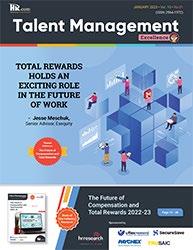


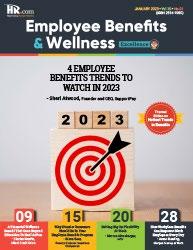
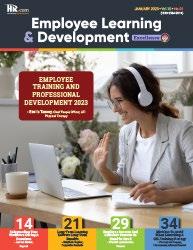


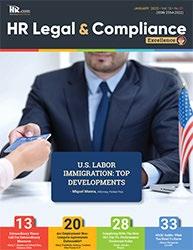


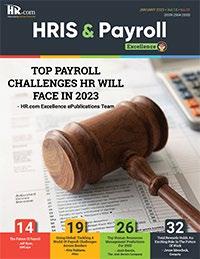

Like to submit an article? Use our online submission form or for more information go to www.hr.com/ExcellencePublications Publications 13 Targeted Publications to Reach Your Audience Informing, Educating, Enlightening and Assisting HR professionals in their personal and professional development, the Excellence series offers high-quality content through the publications!























 Dave Ulrich
Rensis Likert Professor, Ross School of Business, University of Michigan Partner, The RBL Group
Julie Winkle Giulioni
Author, Virtual /Live Keynote Presenter, Inc.’s Top 100 Leadership Speakers
Dr. Beverly Kaye CEO, BevKaye&Co.
Dave Ulrich
Rensis Likert Professor, Ross School of Business, University of Michigan Partner, The RBL Group
Julie Winkle Giulioni
Author, Virtual /Live Keynote Presenter, Inc.’s Top 100 Leadership Speakers
Dr. Beverly Kaye CEO, BevKaye&Co.














 By Christopher Roberts, Engaged Strategy
By Christopher Roberts, Engaged Strategy



 Kelli Anderson, Career Coach, Resume Seed
Kelli Anderson, Career Coach, Resume Seed


 Jennifer Frigault, Executive Coach, Spire Vision Leadership
Jennifer Frigault, Executive Coach, Spire Vision Leadership



 Divvya Desai, HR, Naman HR
Divvya Desai, HR, Naman HR










 By Sarah Stewart-Browne and Stephanie Silver, ServiceNow
By Sarah Stewart-Browne and Stephanie Silver, ServiceNow
















